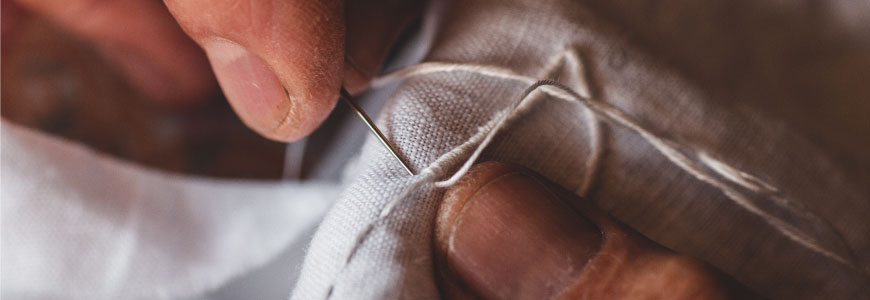Basic Skill You Need To Learn To Save You From Fashion Disaster

You are about to attend an event and plan to wear a jumpsuit that you have just bought, only to find that the outfit is too long or doesn’t fit in a certain area? Your chances are, you go with the oversized-looking jumper or you can turn the problem into a triumph with your hand-sewing skill. Prepare your needle and matching threads and learn these techniques before it’s too late.
-The Running Stitch
Running stitch is the most basic of all the hand-sewing stitches. Even if you are not a pro, it is very likely for you to know about this hand sewing skill. Either from looking at your mom doing it or you learn it at school for your chosen extracurricular activity. Although very simple and can be acquired easily, this skill can be a life-saver. If you already forget how you can do this, follow this instruction:
-
Flat lay the cloth you want to repair
-
Make a threaded needle and start from the back of the fabric (inside)
-
Once the knot at the end of the thread has hit the inside fabric, make a stitch by putting the needle back down in the fabric, the length for the first stitch depends on you, but you can start with a centimetre long.
-
Pull the thread all the way through and bring the thread back up through the fabric and repeat
You can use this stitching for any kind of clothes from a jumpsuit, jeans, dresses. It also works with fabrics, such as cotton, denim and linen.
-The Basting Stitch
The basting stitch is another type of running stitch. The difference lies in the length of the stitch you make. The basting stitch is longer than the running stitch. To acquire this skill, follow the steps above but, Instead of making your stitches a centimetre apart, make it two centimetres apart from each other. The basting stitch is also good for clothes made from cotton, denim and linen.
-The Cross Stitch
Like the embroidery details on your cushion or hand-made tapestry? You could thank the inventor of the cross-stitch. Apart from the aesthetic value of this sewing technique, cross-stitching is also suitable for finishing hems and for front-facing designs. It might be difficult to learn in the beginning, but once you nail it, there are many things you can do with this skill. How to learn?
-
Prepare your fabric, thread and needle
-
Start with pulling the threaded needle up through the back of the fabric until the knot you made hit the inside fabric
-
Pull diagonally to the left, to make the first stitch
-
Bring the needle back through the fabric and make a straight move, around centimetre away, to start with another start for the next stitch.
-
Pull through up back to the front of the fabric and make a stitch diagonally across the last stitch, so it makes an X
-
Pull the thread through and repeat.
This stitching technique is suitable if you want to cover a tear on your clothes with a visible pattern.
-The Backstitch
Before the age of sewing machines, this stitch was used to create all clothing. Layer after layer of back stitches created a pattern of threads that people could wear. It’s a strong stitch.
-
Start by making a small stitch
-
Insert the needle back into the end of that stitch, where you just pulled the thread out
-
Make another stitch and repeat
These stitches should look like they’re overlapping and only fit for inside sewing.
Much Love,
The 1 People’s Team











